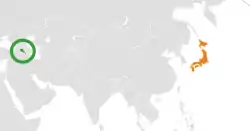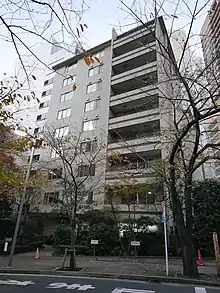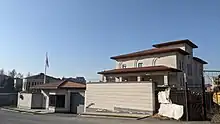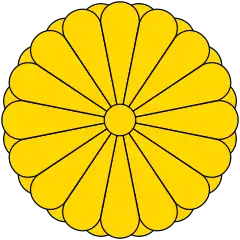 | |
Armenia |
Japan |
|---|---|


The relations between Armenia and Japan, were officially established on 7 September 1992.[1]
Armenia's President Robert Kocharyan paid an official visit to Japan in December 2001, holding meetings with Japan's Emperor and Prime Minister. He announced that the nation was planning to set up an embassy in Tokyo as soon as possible.[2]
History
Due largely to Diana Apcar's effort, Japan was one of the first nations to recognize the Armenian republic as an independent nation on July 22, 1920.[3]
Apcar was appointed Honorary Consul to Japan, in a letter by Hamo Ohanjanian, Foreign Minister of the First Republic of Armenia, “for defending the interests of the newly-born Fatherland, and mitigating the conditions of our compatriots…”.[4]
The relations between Armenia and Japan were officially reestablished on 7 September 1992. Prior to this, relations were through the Soviet Union.
Originally, Armenia was represented at Japan's Beijing embassy, and Japan was represented at Armenia's Moscow embassy. The Armenian embassy in Tokyo was opened on 13 July 2010, and the Japanese embassy in Yerevan was built on 1 January 2015.[5] Armenia initially did not have an ambassador to Japan, until May 2012, when Grant Pogosyan was appointed as the Armenian ambassador.[6]
On 29 June 2017, it was announced by the Japanese Vice-Minister for Foreign Affairs Motome Takisawa that visa requirements for Armenian nationals will be relaxed, beginning on 1 September 2017,[7] and on 31 August 2017, Armenia lifted visa requirements for Japanese citizens.[8]
Armenian genocide
During World War I, the Japanese Empire was involved in the Entente against the Central Powers, placing Japan against the Ottoman Empire, who later committed the Armenian genocide. Alarmed by the genocide, Japanese Viscount Shibusawa Eiichi began a relief effort to rescue Armenian population, his role has been well perceived by the Armenian community who managed to survive in this dark era.[9][10]
Despite this, World War II and subsequent Japanese war crimes have prevented Japan from acknowledging the genocide, in fear of political backlash.[11]
See also
Further reading
- Amirkhanyan, M. D., R. K. Karapetyan, and N. H. Hovhannisyan. Hayastan–Chaponia: kʻaghakʻakan, tntesakan, mshakutʻayin ev gitakan haraberutʻyunner / アルメニア・日本: 政治・経済・文化・科学的な交流 Arumenia/Nihon: Seiji, keizai, bunka, kagakuteki na kōryū / Armenia–Japan: Political, Economic, Cultural and Scientific Relations. Erevan: "Zangak-97", 2005. ISBN 99941-1-010-1.[12]
References
- ↑ "Armenia - Japan". Embassy of Armenia to Japan. Retrieved 1 September 2017.
- ↑ "Armenia's President met Japan's Emperor". PanArmenia Net. 20 December 2001. Retrieved 14 February 2010.
- ↑ "The Stateless Diplomat – Timeline".
- ↑ "The Stateless Diplomat – Timeline". Retrieved 2022-02-20.
- ↑ "Japan-Armenia Relations". Ministry of Foreign Affairs of Japan. Retrieved 1 September 2017.
- ↑ Maruko, Mami (12 November 2012). "Envoy acts as bridge between Japan, Armenia". Japan Times. Retrieved 2 September 2017.
- ↑ "Relaxation of Visa Requirements Nationals for Armenia". Ministry of Foreign Affairs. 29 June 2017. Retrieved 1 September 2017.
- ↑ Ghazanchyan, Siranush (31 August 2017). "Armenia lifts visa requirements for citizens of Japan". Public Radio of Armenia. Retrieved 1 September 2017.
- ↑ "A Forgotten Ally, Part One: Reverend Wirt and Viscount Shibusawa". 20 April 2018.
- ↑ "A Forgotten Ally, Part Two: Answering the Call". 22 May 2018.
- ↑ Dixon, Jennifer M. (2018). Dark Pasts. Cornell University Press. ISBN 9781501730269. JSTOR 10.7591/j.ctt21h4vrf.
- ↑ The publication details of this book differ according to the OPAC. See the entries for this ISBN at WorldCat and also the entry for the library of the Institute of Developing Economies, JETRO. This appears to be an image of a Japanese-language cover.

